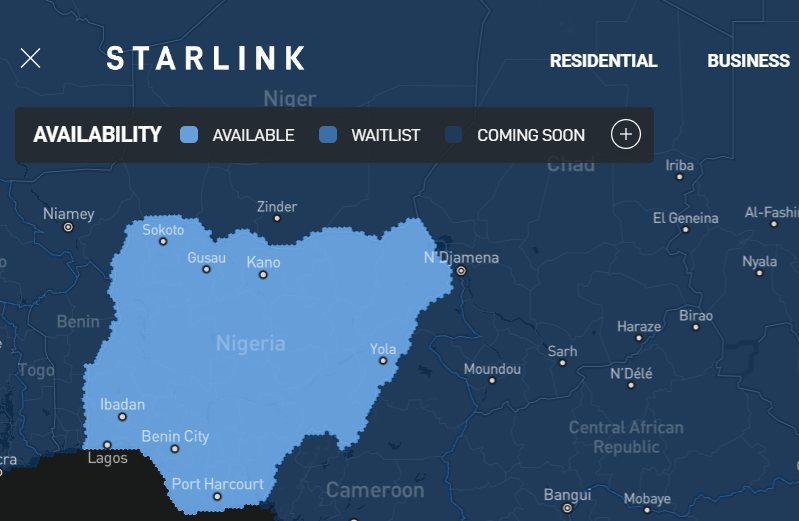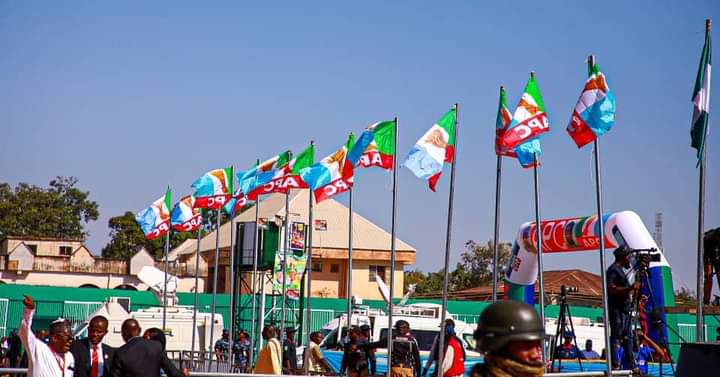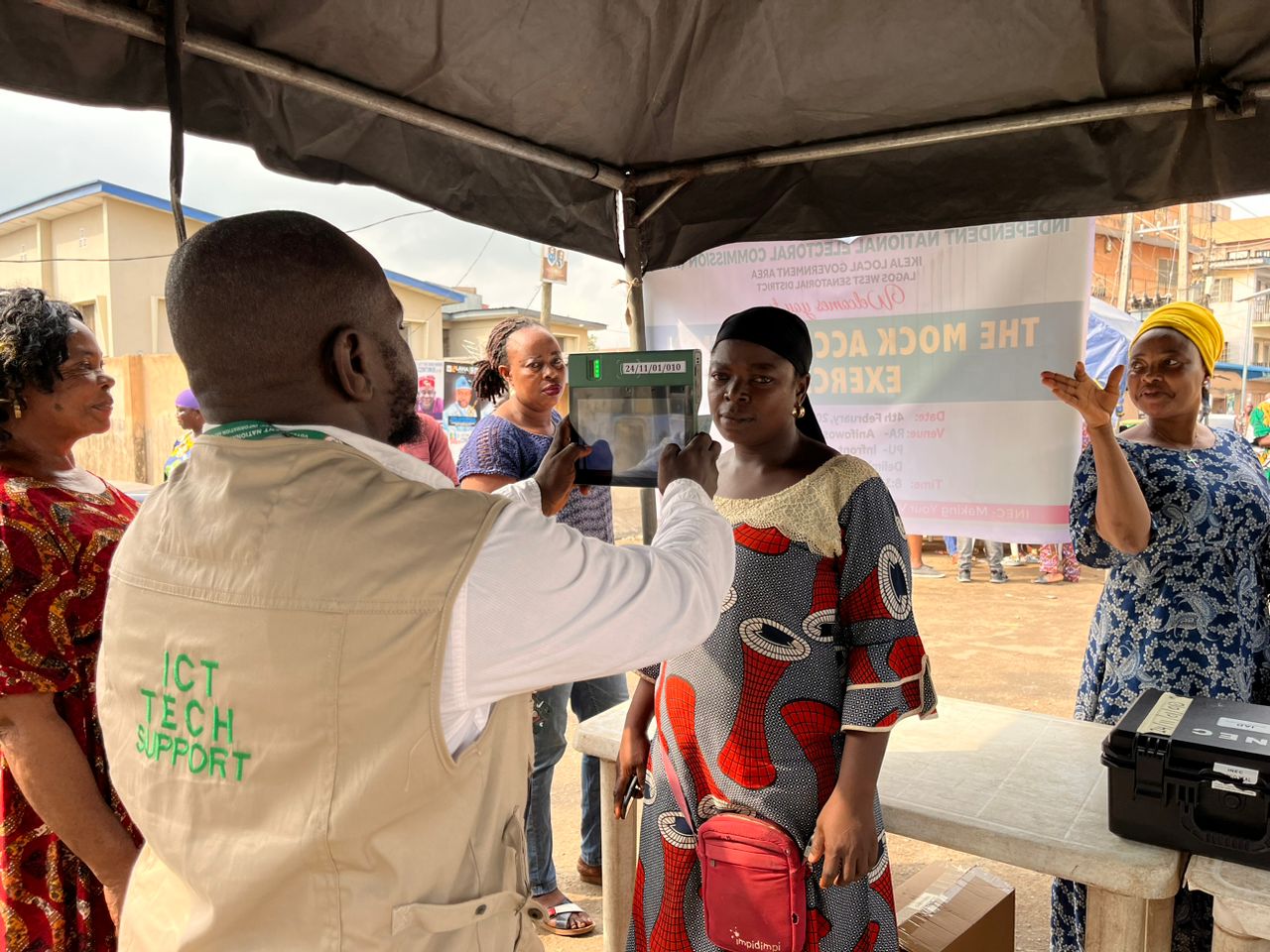On January 31, Starlink, a satellite internet service owned by Elon Musk, was introduced in the Nigerian market.
Two weeks prior, preorder sales had commenced in the country, making Nigeria the first African nation to receive the service.
In 2021, TheCable reported that the company initiated talks with the Nigerian Communications Commission (NCC) to secure the licences needed to launch.
A year later, Musk, SpaceX founder, announced that the company’s satellite internet service had received regulatory approval to operate in Nigeria. As expected, the news was welcomed with glee, particularly by tech enthusiasts who are hungry for faster connectivity.
Advertisement
Starlink was launched as a low-earth orbiting (LOE) constellation of satellites to provide low latency, high bandwidth internet to consumers across the globe, according to SpaceX.
A low latency network connection is one that generally experiences small delay times, while bandwidth refers to the amount of information that a connection to the internet can handle at a given time.
If you are considering using the product, here are five things you need to know about Starlink.
Advertisement
LAUDED FOR SPEED, BUT SERVICE MAY SUFFER DISRUPTION
Starlink, said to offer extremely fast internet service, is positioned to be a serious competition in the market even with the availability of 5G provided by companies like MTN Nigeria and other internet services.
Starlink’s major unique value proposition is speed and wide service to underserved areas.
However, despite its exceptional features in terms of broadband and speed, Starlink said there is no guarantee that its service will not be interrupted during use.
Advertisement
“Speeds and uninterrupted use of services are not guaranteed,” Starlink said.
“Users may experience higher latencies in regions that are far from Starlink ground stations, or during periods of high load on their user terminal. Actual speeds will likely be lower than the maximum speeds during times of high usage.
“Starlink may temporarily reduce speeds if our network is congested.”
ONLY AVAILABLE ON ORDER
Advertisement
With Starlink now active in Nigeria, there is no gainsaying that tech enthusiasts, companies, and businesses that rely heavily on internet access to boost productivity may tilt towards the service.
But there is just one problem: the product is not widely distributed in Nigeria, at least, not yet.
Advertisement
This means that Starlink is not available in tech stores and customers can only access the product by ordering via the website and waiting for the kit to be shipped and delivered to them after payment.
The currency for payment is dollars, and considering the foreign exchange (FX) crunch in Nigeria and the existing suspension on international transactions on naira cards by commercial banks, Starlink’s service may be difficult to purchase compared to other competitors.
Advertisement
HIGH PRICE TAG
Ordinarily, access to super-fast internet connectivity does not come cheap. But with Starlink, it costs more.
Advertisement
Existing products like the MTN broadband 5G router costs about $109 (N50,000), with monthly subscriptions ranging from N1,000 to as high as N40,000.
Also, Fiber One, another leading internet service provider in Nigeria, charges around $106 (N47,000) for installation, and a monthly subscription of $26 (N12,000).
Compared to these brands, Starlink is significantly more expensive to own. Initially, the starter kit price was pegged at $600 (N276,312 at the Central Bank exchange rate) for the hardware and $43 (N19,802) per month for subscriptions.
But, in its latest announcement, the company reviewed the prices to N274,098 ($597) for the hardware and a monthly subscription of N19,260 ($41). While the subscription fee may relatively be competitive, the hardware remains on the high side.
DIY INSTALLATIONS
Assuming you successfully surmount the dollar limitations and your Starlink device is delivered, be prepared to handle the installation yourself.
This means that after purchase, customers are on their own — left to figure out the installation.
“At the time of delivery, the Starlink kit should be able to connect customers to the Services and to remain intact and operable for a minimum of 12 months after delivery if installation instructions are followed, the kit is carefully maintained and not subjected to physical damage, extreme weather conditions, or connected to aged or faulty personal devices; and if services are used within Starlink’s coverage map,” Starlink explained.
“Customers must follow installation directions and connect the Starlink dish directly to the mobile network equipment without any additional jumper cables, receptacles, or any other devices aimed at extending the reach of the link between the two components.”
YOU CAN SUE FOR POOR INTERNET
When the product does not meet its expected internet speed, customers are allowed to seek legal redress.
The company said in the event of such a matter, customers can turn to the regulatory authority in their countries.
“In the event of a significant and regular shortfall of the internet speeds referenced above that is attributable to Starlink, you may be entitled to legal remedies. If you are experiencing an issue, please contact support by submitting a ticket to your user account, ” the company said.
“We will make every effort to resolve your issue. However, if cannot, you have the option of turning to the regulatory authority or a court.”






